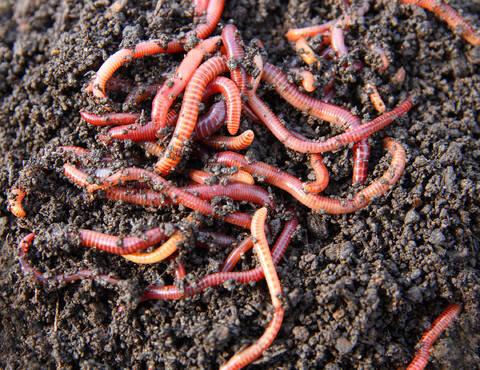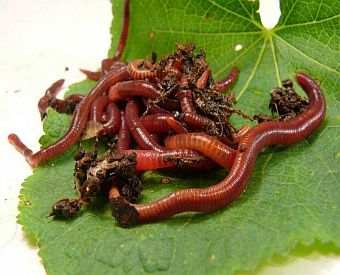Eco-friendly red wigglers: Caring for them effectively
Just How Red Wigglers Can Increase Your Organic Waste Recycling
Red wigglers represent a pivotal component in improving organic waste recycling, properly converting day-to-day kitchen scraps and garden particles right into useful worm spreadings. This procedure not only minimizes the volume of waste sent to land fills but additionally enhances soil vigor, advertising healthier plant growth without the need for synthetic plant foods. Understanding the complexities of developing a vermicomposting system and the optimal look after these worms can significantly amplify the benefits. Yet, the inquiry remains: exactly how can one efficiently incorporate this technique right into their routine to make best use of impact?

Advantages of Red Wigglers
Red wigglers, a sort of composting earthworm, offer many benefits that make them invaluable in natural waste recycling. Their capability to take in a variety of natural products makes them very efficient decomposers. These worms can refine kitchen area scraps, yard waste, and also paper products, changing them into nutrient-rich spreadings. This procedure not only minimizes the quantity of waste sent to landfills yet likewise improves dirt health and wellness.
Furthermore, red wigglers enhance soil oygenation and drain with their delving activities, promoting a much healthier root environment for plants. Their castings are abundant in valuable microorganisms and essential nutrients, promoting durable plant development and improving dirt structure (red wigglers). The use of red wigglers in composting is an ecologically friendly option to chemical plant foods, which can have dangerous side results.
In addition, vermicomposting with red wigglers is a low-maintenance and reliable method of recycling natural waste, making it accessible for households and communities alike. Their quick recreation price makes sure a constant supply for ongoing composting initiatives, additionally magnifying their advantages. In general, red wigglers work as a crucial part in lasting waste monitoring and soil enhancement techniques.
Establishing Up a Vermicomposting System
Developing an effective vermicomposting system needs cautious planning and factor to consider of numerous factors that contribute to its success. The structure of a successful system starts with picking an ideal container. Choices range from industrial bins to homemade choices, however it is important that the container is well-ventilated and appropriately sized to fit the number of red wigglers.
Following, the choice of bed linens material is vital. Ideal bed linen consists of shredded newspaper, cardboard, or coconut coir, which provides both an environment and a source of carbon for the worms. The bed linens should be dampened but not extremely wet to stop anaerobic problems.
Preserving the optimum environment is necessary. Red wigglers prosper in temperatures in between 55 ° F and 77 ° F(13 ° C to 25 ° C )and require a pH degree around neutral. Keeping an eye on moisture degrees is also crucial, as way too much dampness can cause smell problems, while insufficient can dry the worms.
Last but not least, positioning the vermicomposting system in a shaded area shielded from direct sunlight will certainly help preserve a secure setting. With these factors to consider in mind, one can efficiently establish up a prospering vermicomposting system that improves natural waste recycling.
What to Feed Red Wigglers
Feeding red wigglers the right materials is basic to keeping a healthy and balanced vermicomposting system. These worms thrive on a diverse diet regimen mostly made up of raw material, which consists of vegetables and fruit scraps, coffee premises, smashed eggshells, and shredded paper. It is important to prevent feeding them meat, dairy products, oily foods, or any processed things, as these can create odors, draw in parasites, and result in a harmful atmosphere.
A well balanced diet for red wigglers promotes optimal digestion and nutrient manufacturing. Purpose for a mix of eco-friendly materials, high in nitrogen, such as vegetable peels and lawn cuttings, and brown materials, abundant in carbon, like dried out leaves and cardboard. This equilibrium makes certain a sustainable food resource while maintaining moisture levels in the worm bin.
Additionally, it is suggested to slice or shred larger scraps to accelerate decay and make the food a lot more obtainable to the worms. Frequently checking the intake price will certainly assist identify the ideal quantity to feed, preventing overfeeding and maintaining a prospering community. By offering an appropriate diet, you not just support the health of red wigglers yet likewise improve the efficiency of your vermicomposting initiatives.
Maintaining Your Worm Container
To guarantee the health and productivity of your vermicomposting system, keeping your worm bin is vital. If it comes to be too damp, excess wetness can lead to anaerobic problems, hurting your worms.
Extreme temperature levels can worry or eliminate your worms. To attain this, put your bin in a climate-controlled atmosphere away from straight sunlight or warmth resources.
Aeration this link is essential for oxygen circulation. Delicately turning the bedding with a garden fork every couple of weeks will help freshen the product and stop compaction. Additionally, be cautious regarding the container's smell. A foul scent might indicate overfeeding or an imbalance in the carbon-to-nitrogen ratio. If this happens, lower feeding and add more carbon-rich products like shredded paper or cardboard.
(purchase red worms)
Using Worm Castings in Gardening

Worm spreadings, typically described as "black gold" by garden enthusiasts, are an extremely nutritious organic fertilizer that can significantly enhance dirt health and plant growth. These spreadings are produced by red wigglers as they digest raw material, resulting in an abundant, dark, brittle compound including beneficial microorganisms.
Incorporating worm castings into garden soil enhances its structure, aeration, and wetness retention, producing an optimum atmosphere for root development. The high nutrient content of worm spreadings, including nitrogen, phosphorus, and potassium, contributes to energetic plant growth and enhanced returns. Additionally, worm spreadings contain essential trace element and enzymes that advertise the overall wellness of plants, enabling them to better endure parasites and diseases.
Worm castings can be applied directly to the dirt or blended into potting mixes for container horticulture. A slim layer spread over garden beds or included to compost heaps can likewise boost the microbial activity and nutrient account of the compost. As a sustainable and eco-friendly fertilizer choice, worm castings support natural horticulture techniques while lowering reliance on artificial plant foods, thereby promoting a healthier ecosystem.
Final Thought
To conclude, the integration of red wigglers into organic waste recycling techniques offers a viable service for enhancing dirt health and wellness and promoting sustainable horticulture strategies. By effectively disintegrating kitchen area scraps and yard waste, red wigglers add to nutrient-rich worm spreadings that enhance dirt oygenation and wetness retention. This green strategy not only reduces garbage dump contributions yet likewise lessens the dependancy on chemical fertilizers, ultimately fostering much healthier communities and accountable waste monitoring techniques.